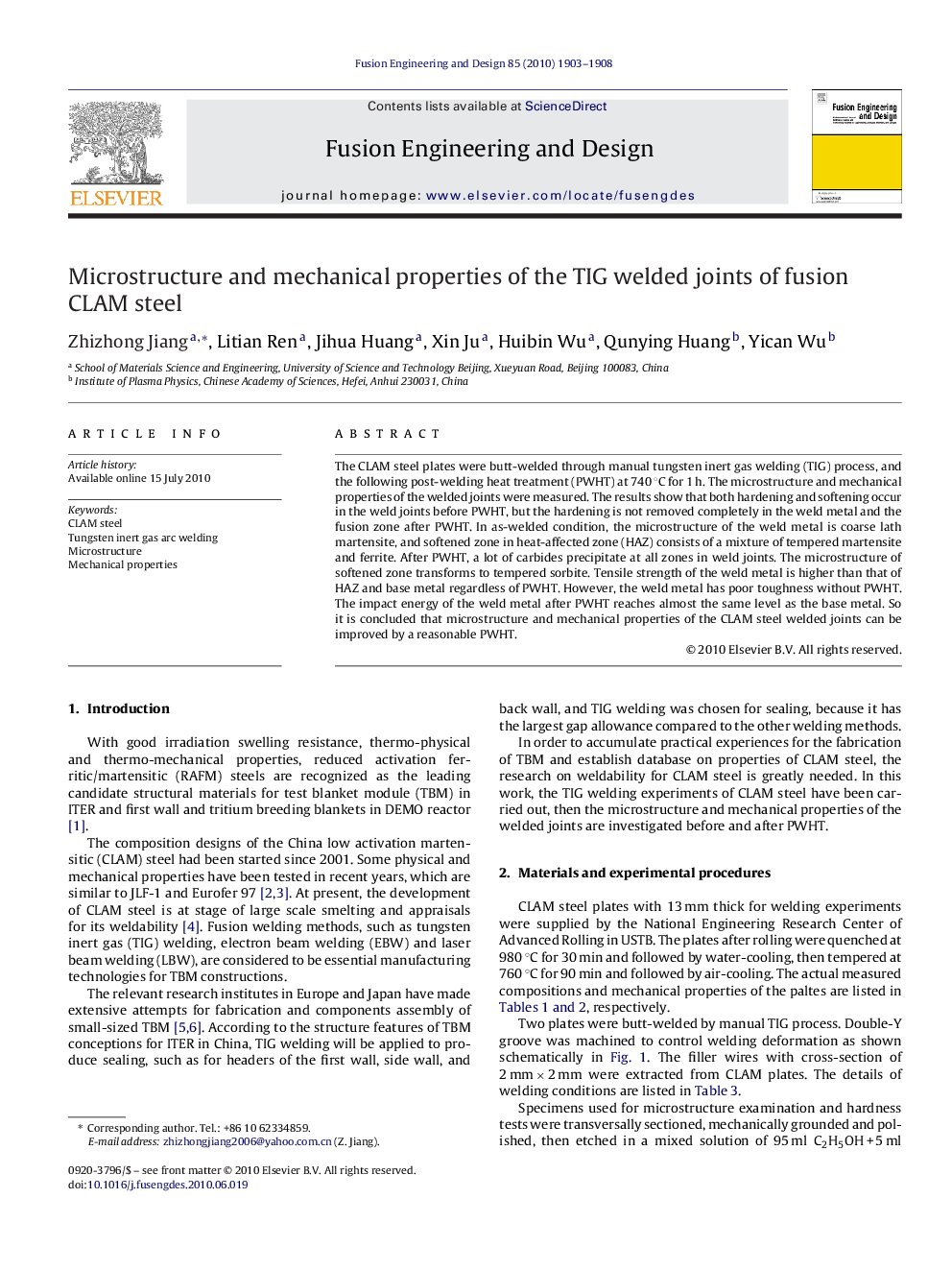| Article ID | Journal | Published Year | Pages | File Type |
|---|---|---|---|---|
| 272651 | Fusion Engineering and Design | 2010 | 6 Pages |
The CLAM steel plates were butt-welded through manual tungsten inert gas welding (TIG) process, and the following post-welding heat treatment (PWHT) at 740 °C for 1 h. The microstructure and mechanical properties of the welded joints were measured. The results show that both hardening and softening occur in the weld joints before PWHT, but the hardening is not removed completely in the weld metal and the fusion zone after PWHT. In as-welded condition, the microstructure of the weld metal is coarse lath martensite, and softened zone in heat-affected zone (HAZ) consists of a mixture of tempered martensite and ferrite. After PWHT, a lot of carbides precipitate at all zones in weld joints. The microstructure of softened zone transforms to tempered sorbite. Tensile strength of the weld metal is higher than that of HAZ and base metal regardless of PWHT. However, the weld metal has poor toughness without PWHT. The impact energy of the weld metal after PWHT reaches almost the same level as the base metal. So it is concluded that microstructure and mechanical properties of the CLAM steel welded joints can be improved by a reasonable PWHT.
